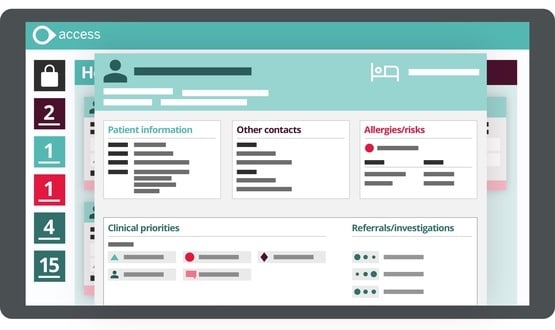Across the miles
- 7 July 2005
 Quin Parker
Quin Parker
"I love video conferencing. It’s absolutely brilliant," says Stephen Palmer, head of department at medical photography and audiovisual services at NHS Ayrshire & Arran.
NHS Ayrshire & Arran’s videoconferencing project started around six years ago, and has slowly expanded to cover thirteen terminals in six locations. There are several situations where teleconferencing has proven useful, particularly on the Isle of Arran, the largest island in the Firth of Clyde, with a population of just over 5,000.
The small hospital there, the War Memorial Hospital, is run exclusively by 20 GPs.
In order for them to earn CPD points, they have to come over to the mainland to attend lectures at Crosshouse Hospital, Kilmarnock, a journey that often warrants an overnight stay on the mainland.
"From a time point of view and a money point of view this was not a good idea," explained Palmer. But with the videoconferencing system in place, GPs can be virtual attendants at the seminars and can earn their professional points.
The Isle of Arran also benefits from a healthy summer tourist industry. Walkers and sportspeople who suffer fractures can still be assessed at the War Memorial Hospital over the video link, before deciding whether to risk the journey to the mainland for treatment.
"We knew it would be a benefit to patients on Arran if they could get an expert consultation on Arran if they could see the doctor before coming to the mainland," says Palmer.
No travelling
On the mainland, teleconferencing is also used to link Ayrshire Central Hospital with cardiologists in Glasgow, who remotely review childrens’ heart scans. Palmer is especially pleased with this development. "To have a room of experts sitting round a table and discussing the patient is incredible, without them spending an hour travelling there and back."
Communication across NHS Ayrshire & Arran has improved, too. Bed management meetings have also proven helpful for the managers of Crosshouse and the Ayr Hospital 15 miles away, for planning demand and allocation, and multi-disciplinary teams are able to meet more often.
Palmer said that in many cases, teleconferencing is put under the wing of NHS trusts’ IT departments. In NHS Ayrshire & Arran, this isn’t the case. "I am in charge of medical photography, and my main remit is all clinical. My job is dealing with images, and dealing with video recording with patients. It was felt that videoconferencing fitted in very well with this."
Funding and the future
The project is funded centrally by NHS Ayrshire & Arran. The equipment is provided by Gibson Videoconferencing, using equipment from Berkshire-based manufacturer Polycom. Palmer stressed that it was impossible to measure investment returns on these kinds of projects: "The amount of money that’s saved, it’s impossible to work this one out."
Palmer explained that the practical benefits of the system were plain. "But in that way it’s difficult to financially quantify the savings that we are making."
NHS Ayrshire & Arran’s telemedicine project continues to expand under the stewardship of Palmer. The next stage in the system, he says, will be to upgrade the internal networks at Ayr and Crosshouse.
The existing broadband service, he says, is "very expensive and not all that reliable", and while the connection between the two hospitals remains good, internal LANs need updating to cope with the extra videoconferencing traffic.
"Providing health services to sparse populations dispersed over hundreds of miles of land and sea is one of the major issues the NHS faces in Scotland," Palmer said. The Isle of Arran, often dubbed ‘Scotland in minature’ due to its mixture of high and lowlands, could be a microcosm of the country’s future.
"It’s kind of expanded over the years, and people have seen the benefits of it," said Palmer.




